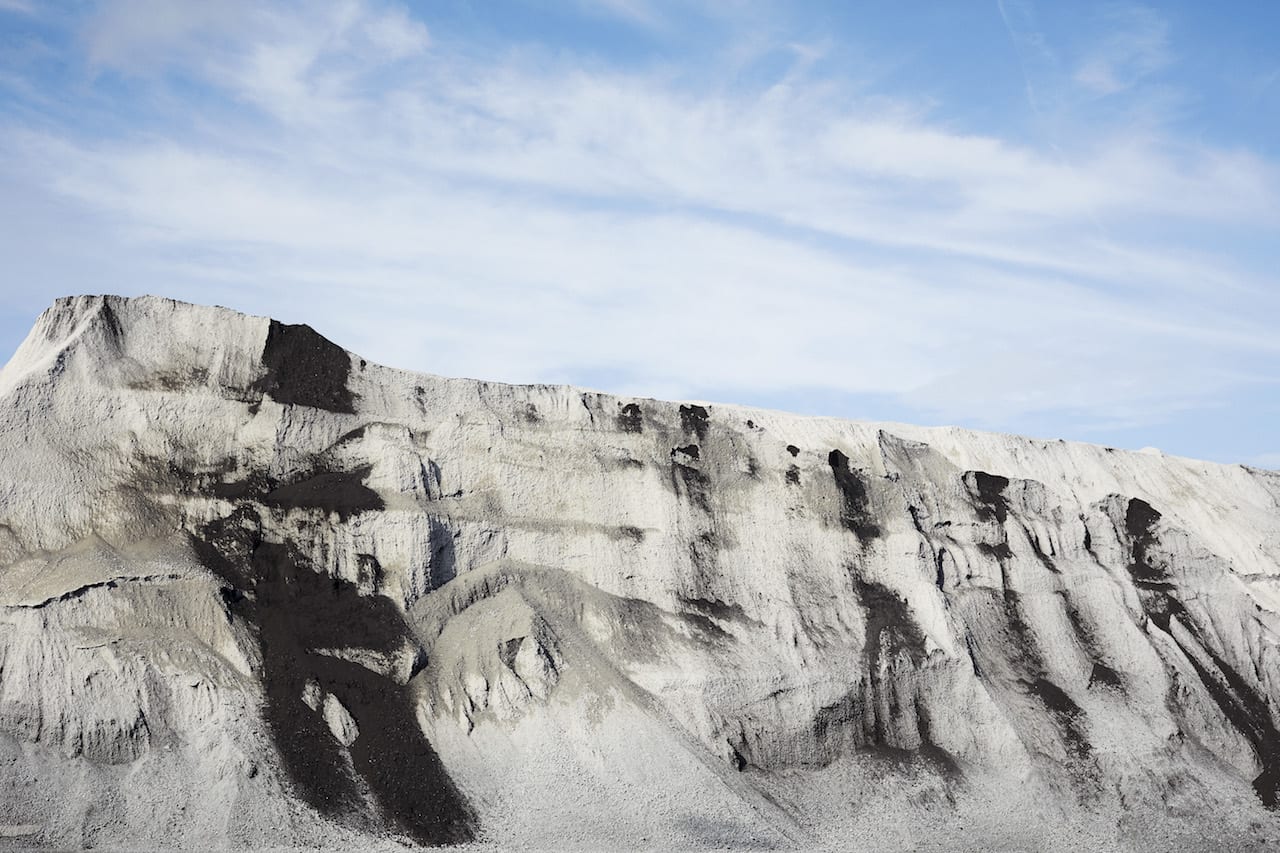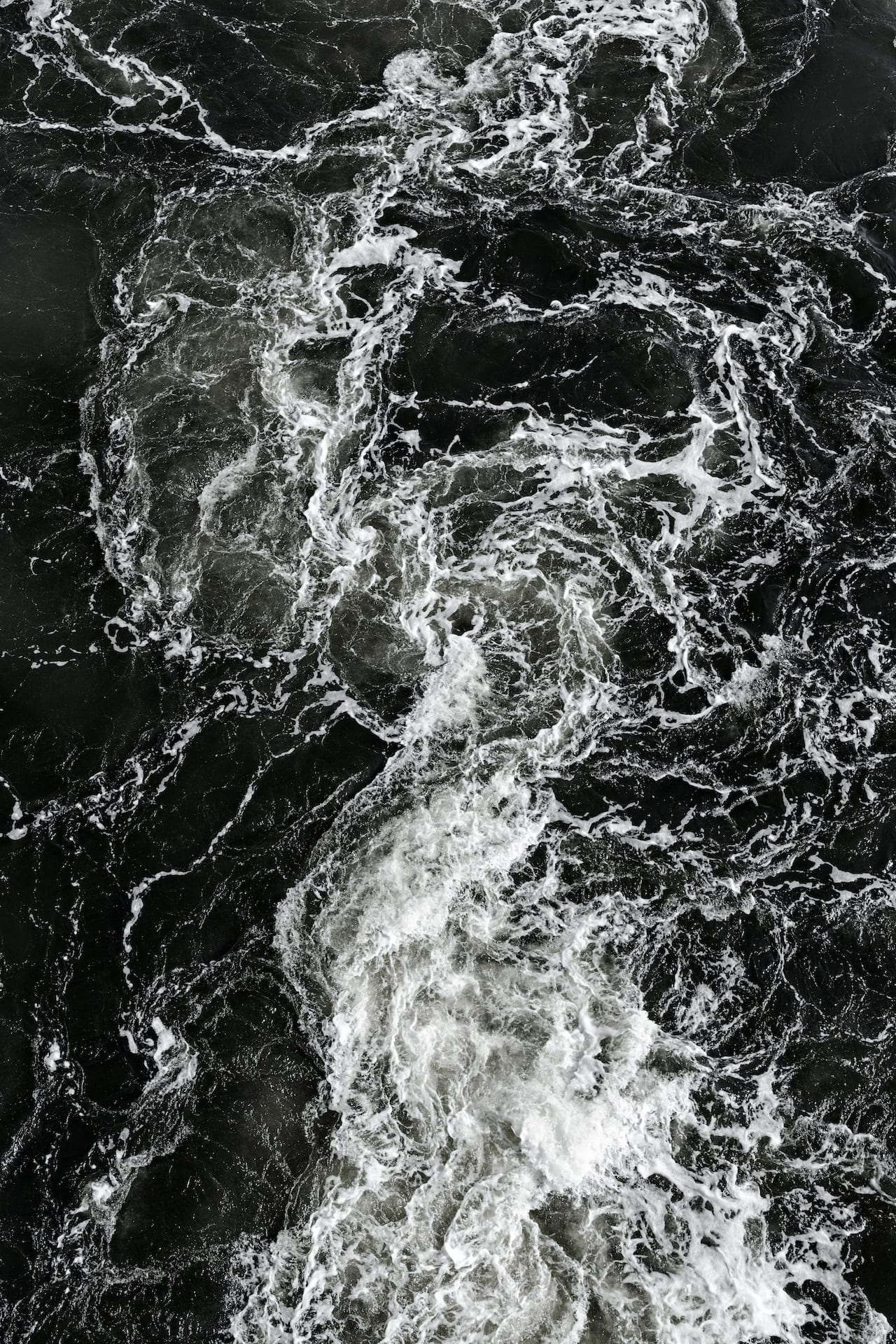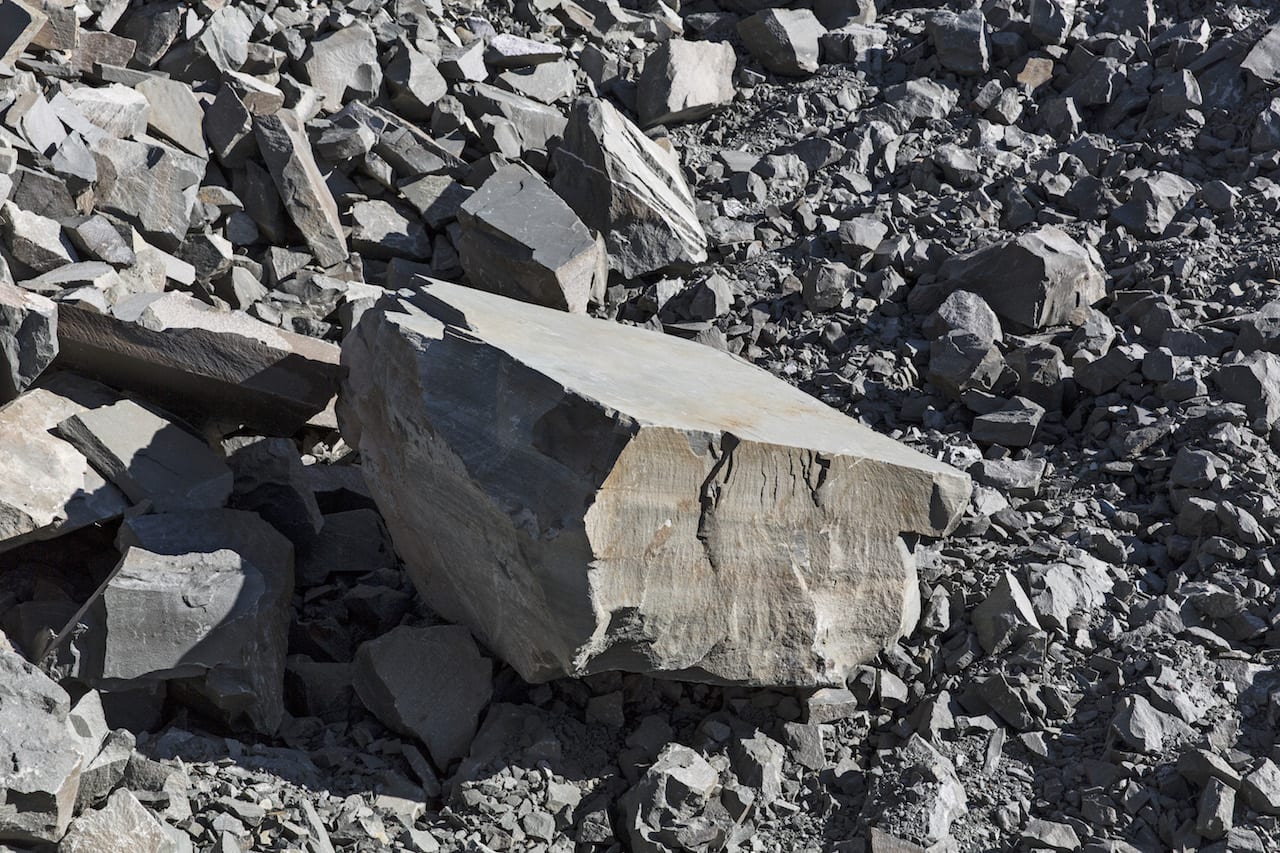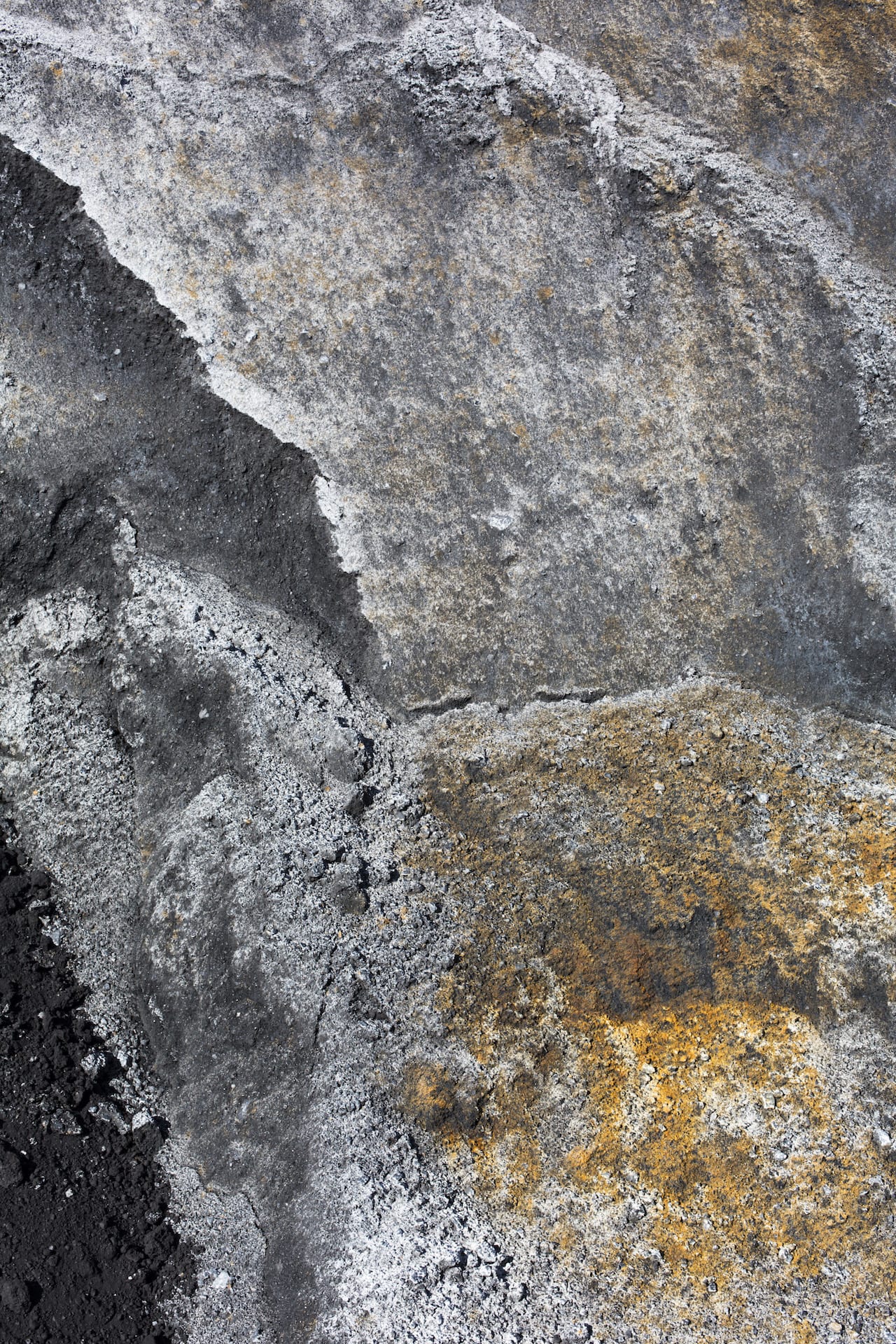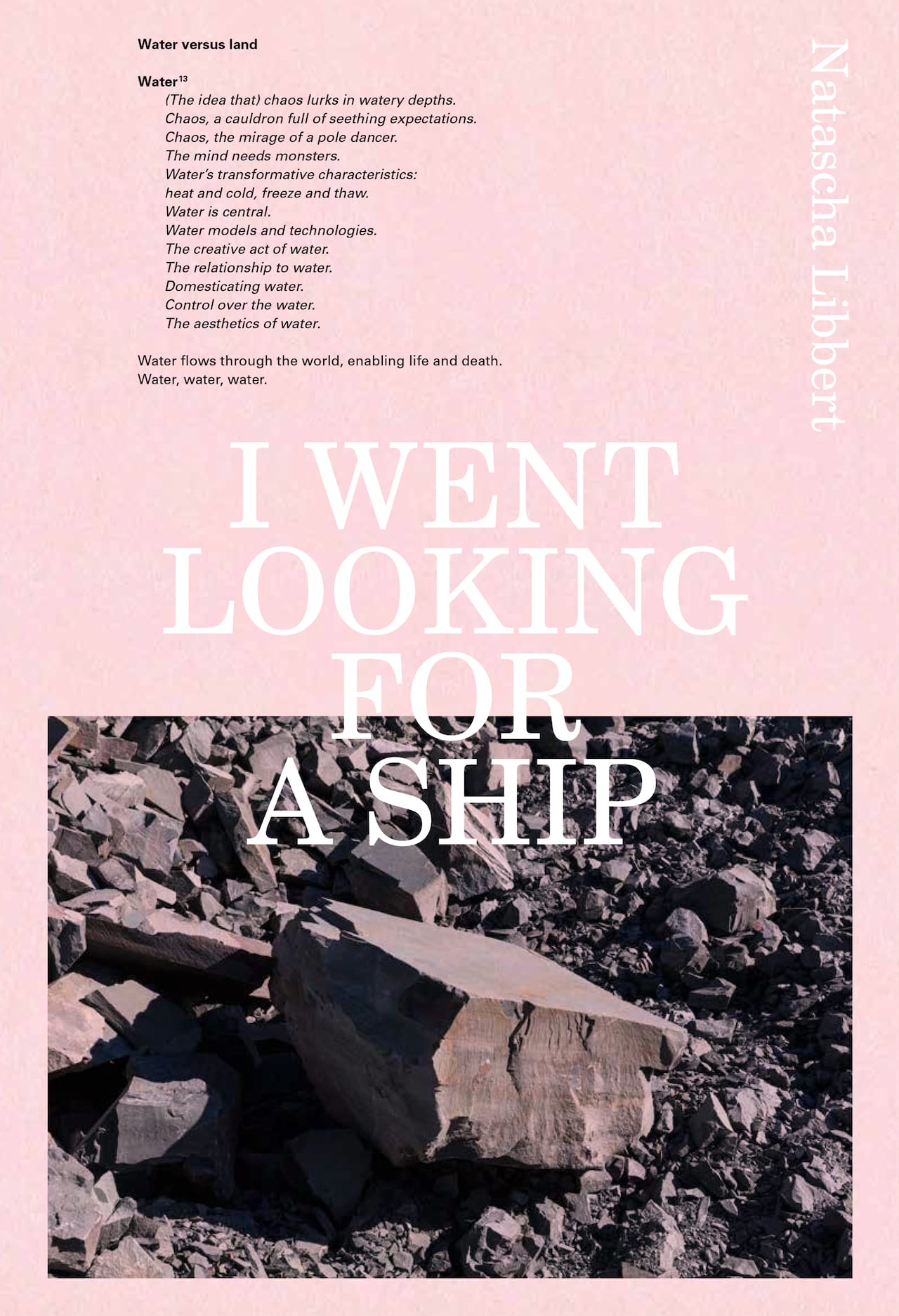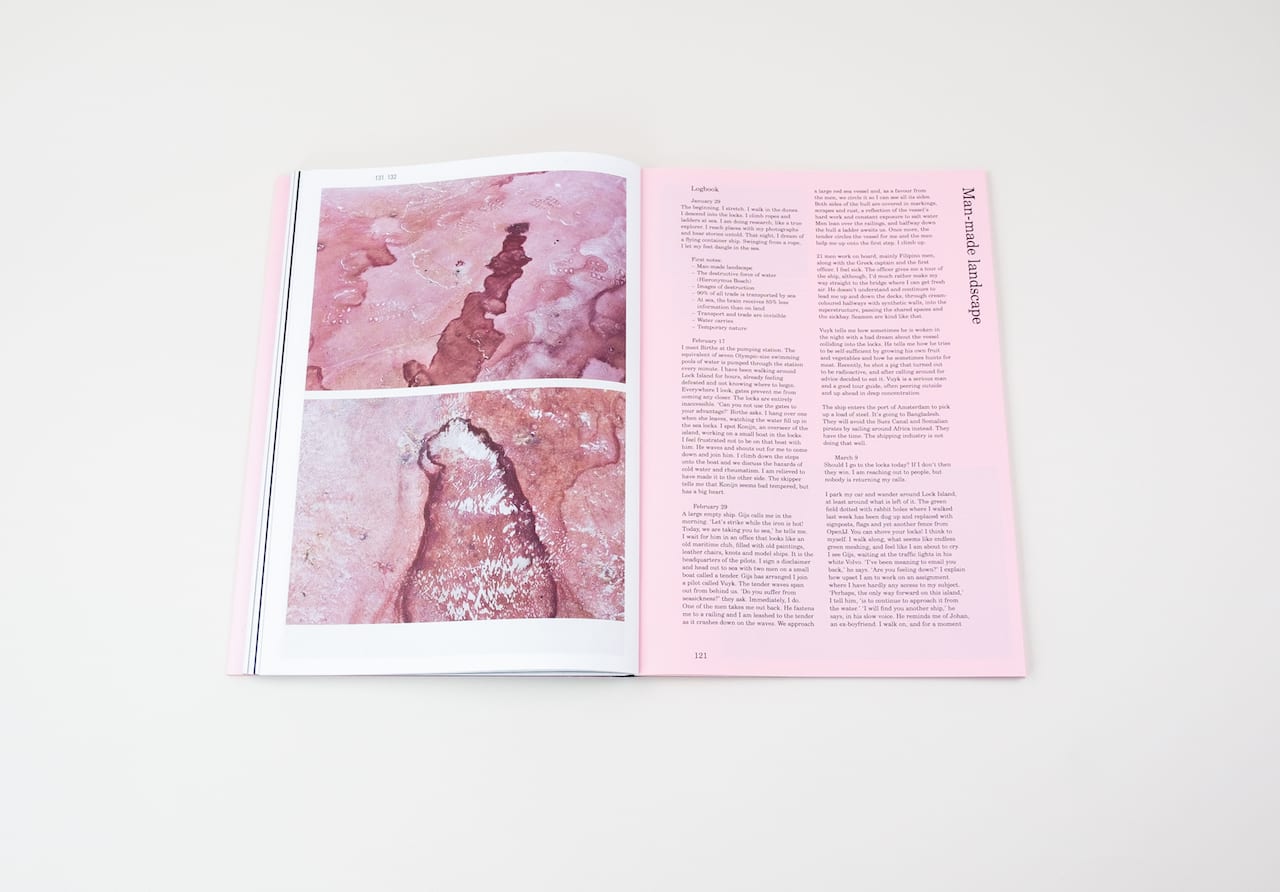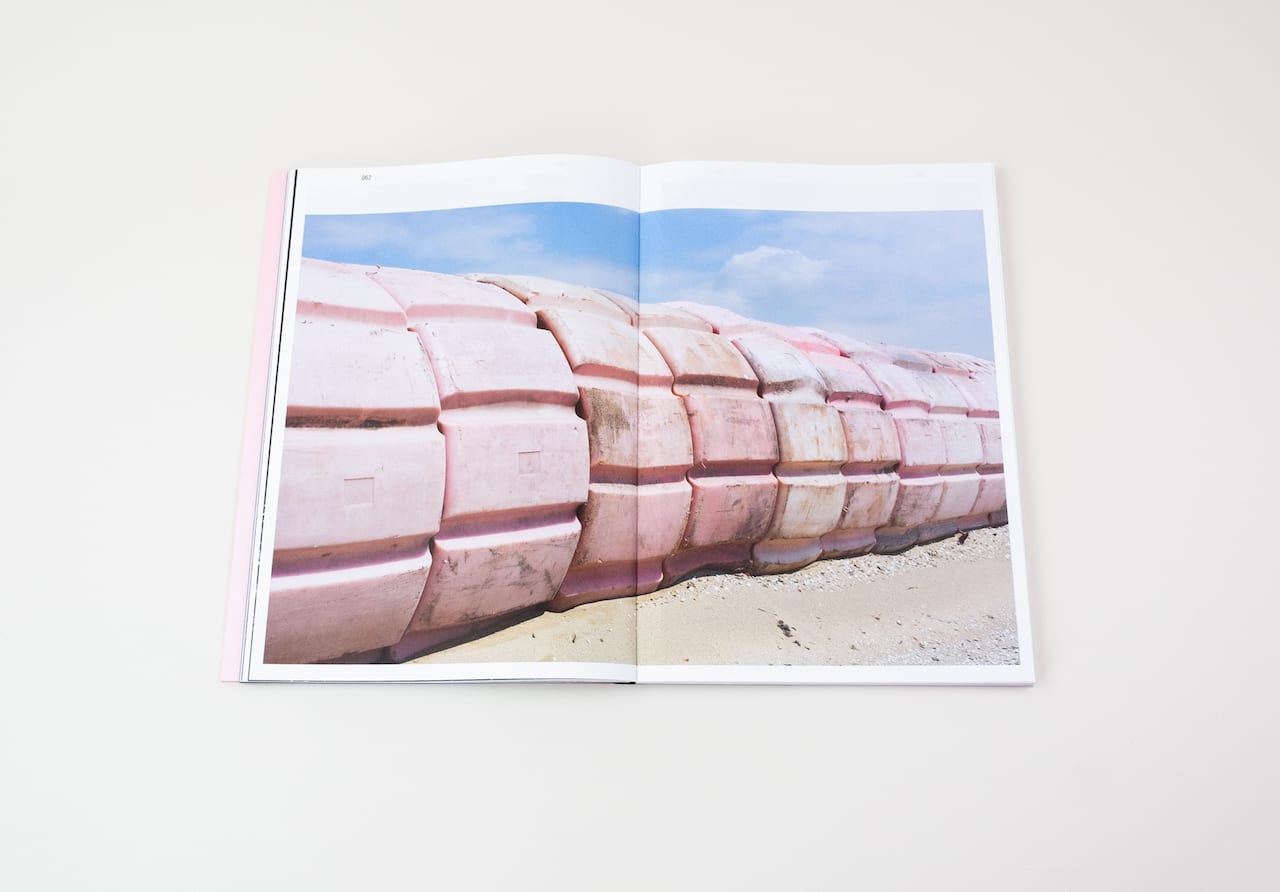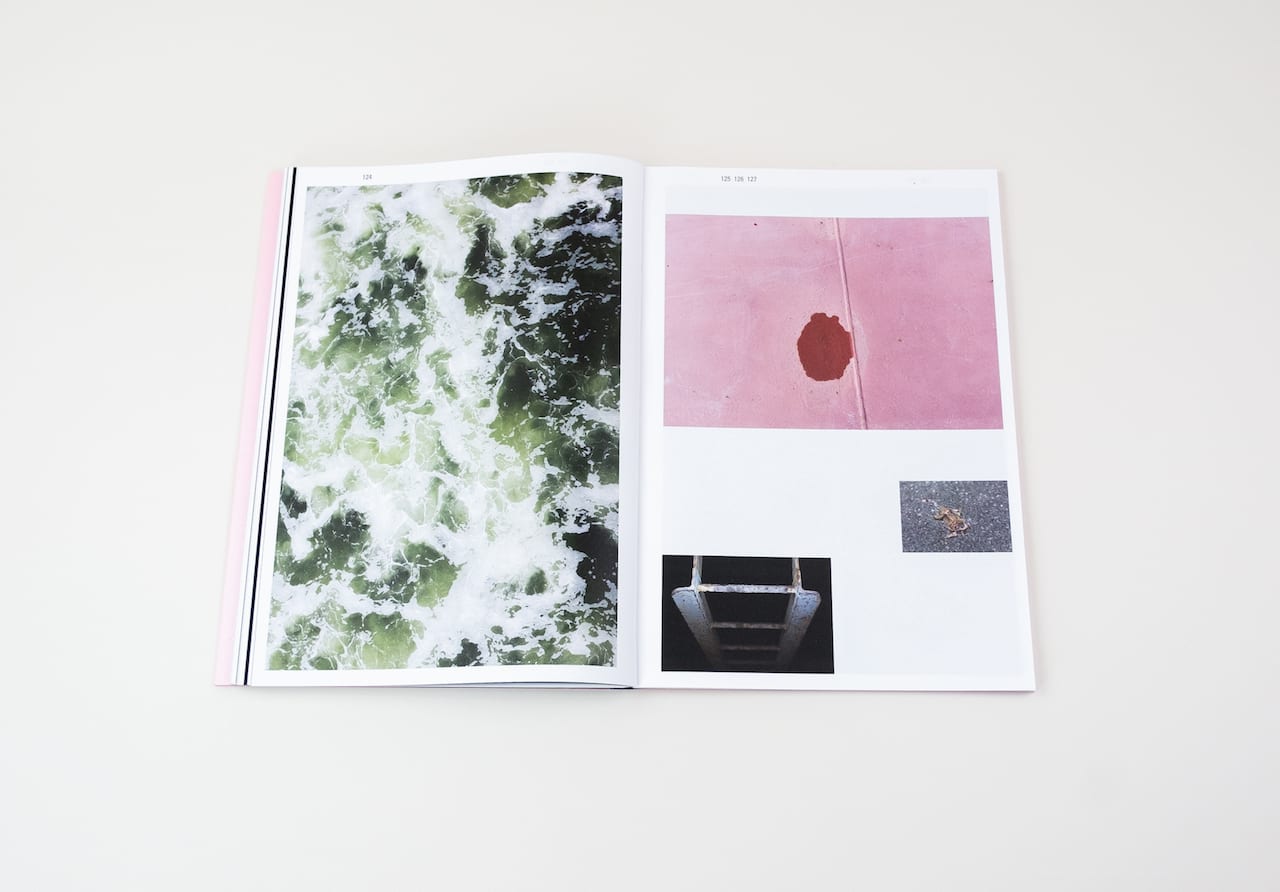In 2016, Natascha Libbert was commissioned to photograph the sea locks of IJmuiden – large constructions which allow ships and boats access to the Dutch port, and which are therefore of tremendous importance to the economy of the Netherlands, and in particular the port of Amsterdam further downriver. But while they’re important, they’re not necessarily exciting photographic subjects, and some of what makes them significant is hard to pin down visually – as is shown by the phrases and thoughts that the Dutch photographer jotted down in her notebook while working on the project, such as “man-made landscape”, “90 per cent of all trade is transported by sea”, and “at sea, the brain receives 85 per cent less information than on land”.
How does one go about translating ideas into pictures, and what will the resulting pictures communicate? Perhaps inevitably, Allan Sekula’s seminal work, Fish Story, comes to mind. First published in 1995 and recently reissued by Mack Books, Sekula’s book lays out a vision of how contemporary critical realism might look and read, asking how photographs combined with text can deal with a subject matter such as global trade and its ramifications.
Commissioned to photograph the sea locks by the Province of Noord-Holland and the Noord Hollands Archive, Libbert decided to shoot her landscapes from onboard a ship, and found one that transported stone from Norway. Her subsequent publication, I went looking for a ship, centres on the ultimate futility of attempting to photographically describe the topic at hand – with or without text.
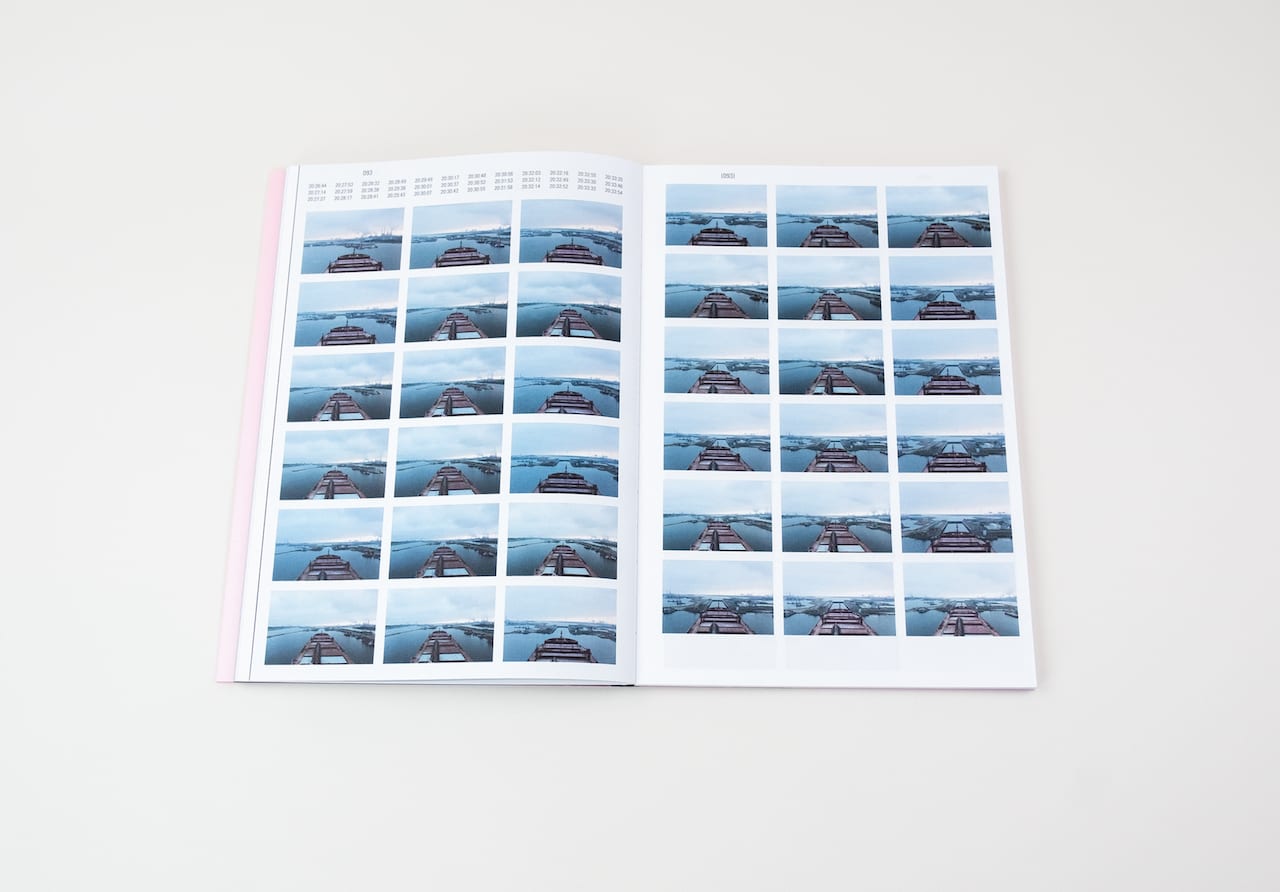
In the current climate it sometimes seems that there has to be a clear, single answer for everything; the role of the arts might be to remind us that, for many topics, simple answers do not exist. Some subjects are too complex to be grasped in photographs or words, but what makes it art is trying anyway. So with photographs of ships, the sea, terrain, men getting into wetsuits, rocks, the rusted hulls of ships, the locks, Nazi symbols buried in the ground, and her own words, Libbert tackles the subject of global trade – a powerful force that extends into so many aspects of our lives, yet is invisible.
Unlike Sekula’s work, I went looking for a ship does not offer any judgment or conclusions. It shows what can be communicated with photographs, often employing repetition or variants of the same picture, such as two spreads showing the ship that Libbert travelled on going through a lock. The result is bewildering and engaging at the same time. It is critical photographic realism of and for our time, discarding the grand or simplistic narratives all around us.
www.nataschalibbert.nl I went looking for a ship by Natascha Libbert is published by The Eriskay Connection, priced €32 eriskayconnection.com
